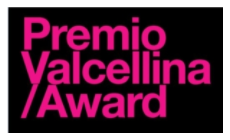NINA HILTON
NORWAY / 2022SECTION OF DRESS: Floral Bunad
A motif from Nina’s own Bunad, handed down from her ‘Mormor.’
It was such an honour to work on this project and produce an emblem from a corner of the world which holds a special place in my heart.
My motif is taken from a Norwegian ‘bunad*’ (national dress – pronounced ‘boo-nard’). My mother is Norwegian, and my father is English, and I’ve always been very happy with my dual nationality. I feel it is an immense privilege – growing up with one foot in two camps gives you a unique perspective on the world around you, as you are able to simultaneously be both a part of, and apart from, your cultures and to compare them from an informed position.
The ‘bunad’ in Norway is a thick, heavy dress made of a wool/linen mix. It is cut with extra width hidden in the pleats and bodice so it can be let out over time (as the wearer gets older and heavier)! It is meant to last a lifetime, and it does. The dress is worn over an ornate blouse and proper shoes must be worn with it. There are shawls, belts and purses which accessorise it, but there are rules about how these may be worn. For example, a belt with square metal panels signifies that the wearer is a married woman, while younger, unmarried women wear a belt with circular ones.
Furthermore, although it is referred to as a ‘national’ dress, it is highly regionalised. Every district has its own bunad, denoted by the colours, patterns, and the embroidered motifs. Mine is from Bergen, Norway’s second city, which lies on the south-west coast of the country. This is where my mother and grandmother were born and bred. My dress belonged to my ‘mormor’ – my mother’s mother. Bunads are handed down through the generations, mother to daughter, so when I wear mine, I feel a connection to my now long-gone but still much missed mormor.
The bunad then is a number of things: a symbol of heritage, of national pride, a beautiful display of sewing and needlework skills and yet still a practical item of dress. It is always considered ‘correct’ to wear to a formal occasion in Norway, even today in the 21st century. Weddings, baptisms, confirmations, funerals – even formal parties are places where you wouldn’t be surprised to see people wearing their bunads in Norway. The best day to see bunads of every style and colour is on 17th May every year – constitution day – when the streets are filled nationwide, as people come together to take part in/watch parades, wave flags, eat ice-cream, sing songs and generally party throughout the day in celebration.
—
Contact: Please connect with Kirstie at reddressembrodiery@gmail.com to put you in touch directly.
OUR SUPPORTERS
A huge thank you to all who have given their time, energy, enthusiasm, advice, experience and support to The Red Dress project over the years.
In addition to the organisations below, funding has been gratefully received from a number of private donations and via three crowdfunding campaigns in 2020, 2022 and 2024.
In addition to the organisations below, funding has been gratefully received from a number of private donations and via three crowdfunding campaigns in 2020, 2022 and 2024.












"
"